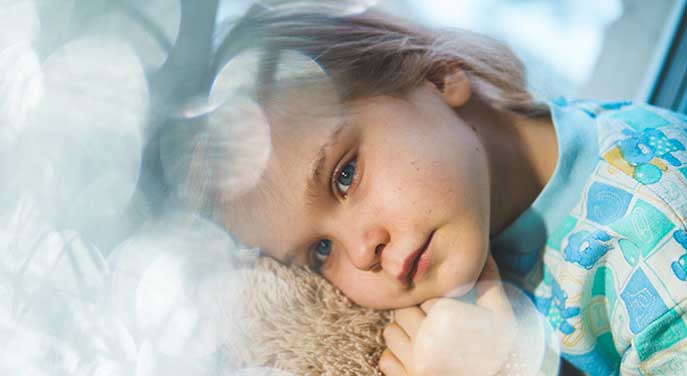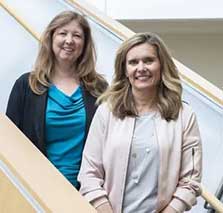It’s midnight and your four-year-old child is congested and struggling to breathe, with a barky cough. Do you go to the nearest hospital? The children’s hospital across town? Do you wait and call your family doctor in the morning?
Many parents experience situations like this, and it’s terrifying. Edmonton researchers Lisa Hartling and Shannon Scott have devoted much of their careers to making sure parents have the knowledge they need to make informed decisions about their children’s health in a crisis.
The two Stollery Science Lab Distinguished Researchers have worked together since 2005 in a field known as knowledge translation, communicating health research in forms that resonate with parents. Starting with hard-cover storybooks, they have created 23 tools to share evidence-based research on topics ranging from croup to concussions, fever, ear pain, urinary tract infections and, most recently, COVID-19. Most of their tools are now e-books, videos or interactive infographics. They can be viewed at Trekk.ca and are also played in 383 clinics, emergency departments and urgent care waiting rooms across Alberta.
Scott and Hartling are studying how to make their tools more relatable to parents from different cultural and linguistic backgrounds. But simply translating the existing videos and infographics isn’t the answer.
“We don’t have the resources to translate a video into 10 or 12 languages,” says Hartling, a professor of pediatrics in the Faculty of Medicine and Dentistry at the University of Alberta. “So how can we create tools at the outset that really resonate with multiple language and cultural groups?” This work, involving a team of staff and students, is supported by the Stollery Children’s Hospital Foundation through WCHRI.
Hartling and Scott are supervising a PhD student who is working with the Manitoba Metis Federation to look at the best way to reach parents in that community. They also interviewed French-speaking parents after they adapted one of their early videos, on croup, for a francophone audience.
Hartling’s team adapted the same video for the Filipino community in Edmonton, adding a voice-over in Tagalog, then seeking input from Filipino parents about the tool. Last summer, their students interviewed health-care providers and community leaders who work with Indigenous families and new immigrant/refugee communities in Edmonton.
Early results from these studies show the importance of the context, characters and background images in the videos and infographics. For instance, a video showing a mother getting into her car and driving her sick child to the hospital won’t resonate with parents who use public transportation or live in rural or remote settings. The characters can’t all be Caucasian, and they can’t all be from the same kind of family.
“Across the suite of tools, we are trying to ensure that we have diversity of the types of families—single-parent families, same-sex couples with children, families with a parent with a disability, all shapes and sizes of people,” says Scott, a professor in the Faculty of Nursing.
Hartling and Scott have a parent advisory committee they rely on to help with their work. Efforts to increase the diversity on the local committee have not always been successful, but they are launching a national consultation network of parents that they hope will attract people from different backgrounds and geographic regions.
They are also developing a new tool to help parents navigate the challenges of having a child with COVID-19, and they have a postdoctoral fellow working on an app to increase accessibility to all their parent tools.
“We are trying to really increase the reach and break down barriers,” says Scott. “It’s our life’s work.”
This article was submitted by the University of Alberta’s Folio online magazine. The University of Alberta is a Troy Media Editorial Content Provider Partner.
© Troy Media
Troy Media is an editorial content provider to media outlets and its own hosted community news outlets across Canada.


